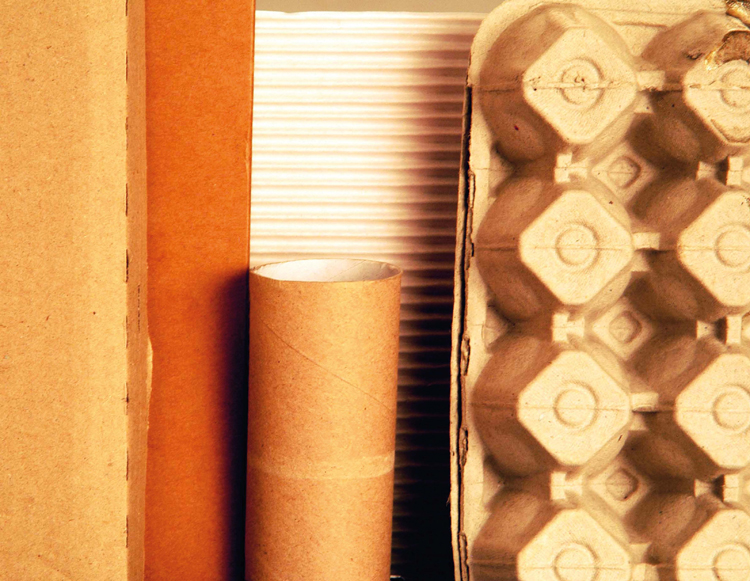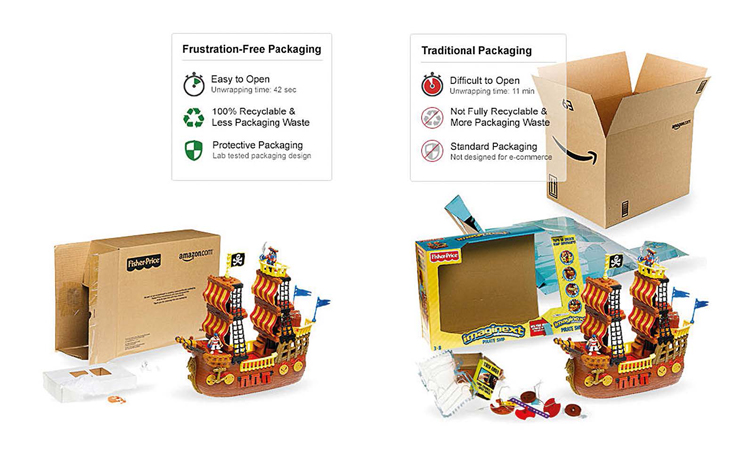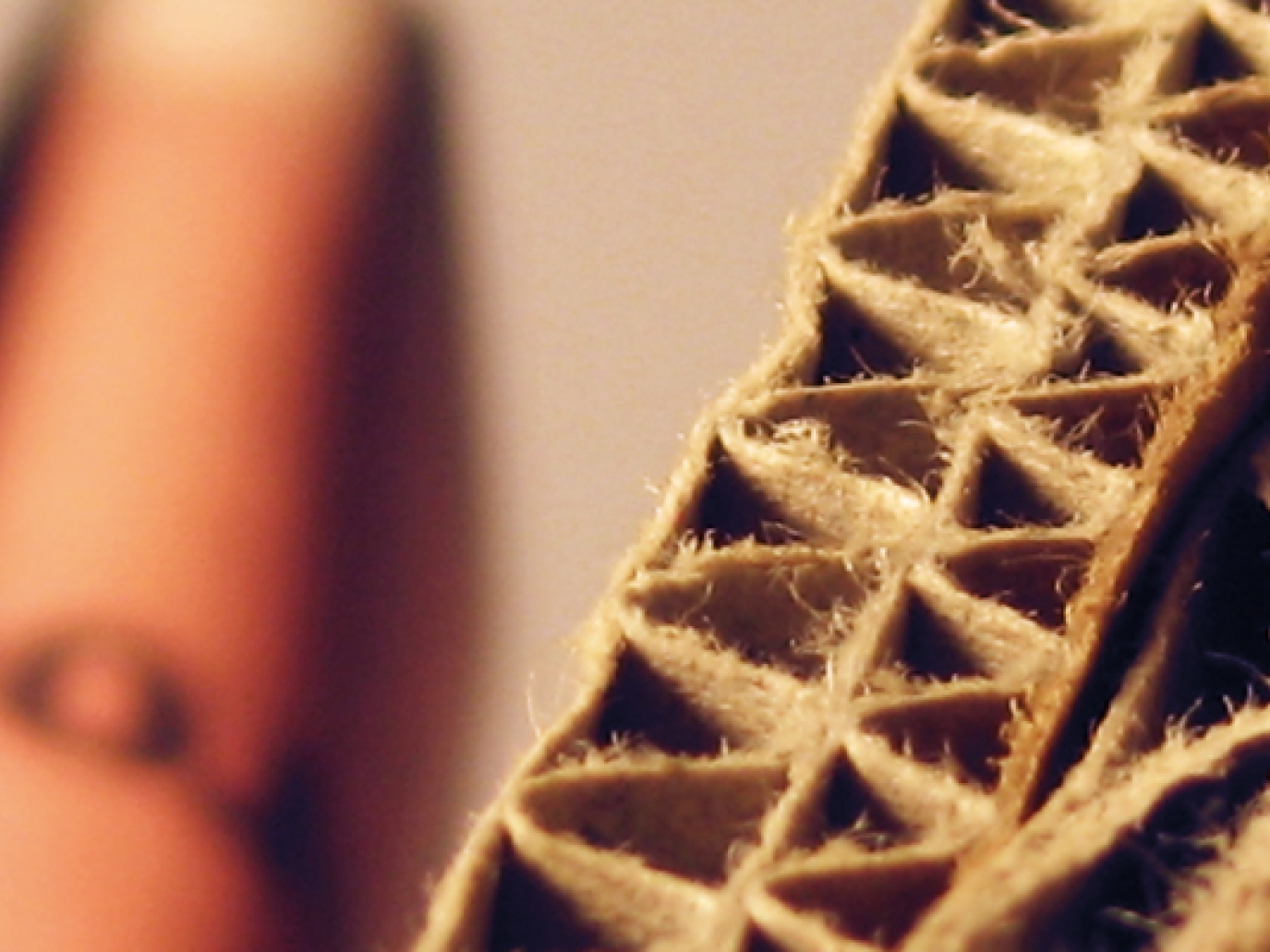Following transformations in real time. This is how we can sum up the new Comieco’s initiative on e-commerce started recently to steer this sector, which is experiencing a strong growth, towards a more sustainable approach. Its rapid development is confirmed by data showing that over the past five years, e-commerce turnover has doubled and it is now worth 5% of total retail sales in Italy.
By observing this development, Comieco launched its e-commerce project, especially because the trading of “physical” objects is growing exponentially compared to that of services, which is also growing but at a slower pace and which is dematerialized by definition.
E-commerce packaging presents undoubtedly some peculiarities. Not only does it become waste in matter of seconds after entering our homes, but it can be very varied and contain varied materials besides cardboard. Multi-material waste is the most complex to recycle, with a negative balance from a circular economy point of view. “We launched this project, which is in its initial phase, exactly because we have noticed an increase in sales and consequently in packaging,” told Renewable Matter Piero Attoma, Comieco’s new chairman. “As a consortium we believe we are able to cooperate with the players representing this kind of activity.”
E-commerce in Italy
In Italy the e-commerce sector is growing. According to Milan Politecnico Osservatorio e-commerce data presented at the 11th Edtion of Netcomm eCommerce Forum, in 2016, Italians will buy €19.3 billion online, a 17% increase compared to the previous year amounting to €2.7 billion. Here is a breakdown of these data: tourism +11%, IT and electronics +22%, clothing +25%, publishing industry +16%. Made in Italy sectors are also performing well with even higher increases. In 2016, Food&Grocery will increase by 29% with a €530 million turnover, while the furnishing sector will grow by 39%, with a €570 million turnover. On top of this, Beauty and Toys, 16% of e-commerce total, with a €2.214 billion turnover. This sector is also rapidly changing since the online purchase of these products grows at an even higher rate, +27% compared to services, +10%.
At global level, online sales represent only 7% of total sales with a total turnover of $2,700 billion (€2,407 billion), that is 3% of global GDP. 1.5 billion people buy online worldwide. China is ranking first with $900 billion (€802.2 billion) followed by the USA and the UK. In total in Europe, online sales amount to $565 billion (€503.6) with 300 million customers.
Sustainability in a Box
The challenge is thus to understand whether it is possible to standardize packaging according to materials used, to rationalize it in order to include the basic elements of sustainability and the circular economy such as recycling and waste reduction.
“Today in Italy, there are 30 million internet users aged 15 and above, 20 million of them use e-commerce, this number has doubled since 2011,” tells us Roberto Liscia, chairman of Netcomm, a consortium-like association that brings together e-commerce operators and which is collaborating with Comieco. A scenario in rapid expansion where packaging represents a very important aspect.
The quantity of goods traded is growing and they are also becoming smaller and smaller; the trial period phenomenon is also increasing with consequent returns, another test for packaging. “In this panorama, it is clear that packaging must be rethought in its entirety: it must be smaller, tailor-made to the object, simple to open and easy to recycle,” Liscia continues.

This is why the work carried out on e-commerce packaging is happening at different levels.
First: packaging optimization according to product type in order to avoid waste; second: choice of material; third: printing, even on packaging, of the recipient’s address. The last level is to turn packaging into a communication tool, maybe multi-medial, through QR codes.
“With Comieco,” Lisica concludes, “we have created a mixed working group to tackle the following problems: sustainability, recycling, the circular economy and unification of standards.”
Within this framework, Comieco wishes to develop the use of packaging made with recycled paper, which presents a huge potential since Italy has a lot of expertise, both in the field of cardboard manufacturing and in the paper-transformation industry. And there is also another advantage. E-commerce has no particular requirements for virgin paper because, at the moment, there are not food items that come into direct contact with the packaging.
“The e-commerce sector uses pulp, but we do not know to which extent, since we are in the initial phase of the project and data will become available only over the coming months,” Attoma continues. “Thanks to research, we are currently examining recent developments: Netcomm has a lot of data which unfortunately do not provide specific information on packaging used. Knowing the turnover though, goods’ origin and use, and client typologies of the e-commerce is very important for us. Especially because to act in this sector, and e-commerce is a very complex one, we need a sound knowledge of it. This is why our collaboration with Netcomm is crucial.”
Being in its initial phase, the project has yet to develop a direct contact with individual e-commerce operators. “What we have understood from this first exploration is that e-commerce operators are trying their best to improve packaging by rationalizing it and this facilitates its recycling,” Attoma continues. “The elimination of plastic and adhesive tape, for instance, represents a step forward towards packaging sustainability since their presence hinders paper recycling.”
For example, over time, e-commerce colossus par excellence, Amazon, has rationalized its packaging, both in its dimensions and in the quantity of materials used. The Stars-and-Stripes company has produced “easy opening” packaging without metal or plastic tapes and made it possible for clients to leave a feedback about the quality of the shipment and its packaging. These are activities that only indirectly lead to sustainability, even if they offer substantial material saving, but they also represent a crucial database for the future development of sustainable packaging.
Amazon and Fisher Price, The Pirate Ship Case
Fisher Price’s “Pirate Ship” toy is an example of what happens when packaging is changed, from that used for retail to that used for e-commerce.
When packed using Amazon’s optimized frustration-free packaging, as far as logistics is concerned, this toy becomes much more sustainable because:
- its packaging is entirely recyclable;
- it contains five less components;
- 0.5 less square metres of paper is used;
- 380 square centimetres (PVC and metal clips) are eliminated;
- it does not require secondary packaging for shipment.

Unknowingly Ecological
It is worth making a little digression on this. There are some managing aspects of manufacturing chains that are unknowingly ecological. Energy efficiency and in this case packaging rationalization are choices influenced by drivers other than sustainability – economic savings due to reduced energy consumption for the former, and the need for less space in logistics for the latter – but that must be given great importance because they enter “naturally” into the “classic” or either existing chains. This is why they represent an ideal basis for further developing the circular economy, since they are able to increase the value chain along the supply chain and in doing so they can “contaminate” other activities.
Comieco’s role grafts on this and evolves in a positive yet different direction. The connection that the consortium establishes between companies producing packaging even from recycled paper – first of all paper mills and paper-transformation businesses – and companies using such packaging becomes a sort of business-to-business operation facilitating exchange. Not only of expertise and good practices but also of products. “Comieco’s aim is to fulfil its mission, that is increasing recycling,” Attoma carries on. “It is no longer just a question of promoting recycling by increasing collection but also of identifying and developing intervention areas by paying attention to behavioural and social changes.”
This is the strategy that Comieco is adopting for instance in the case of packaging for Langhe wines and peaches. “Working with the fruit sector we have rationalized the Italian packaging production, so that we have the same dimensions, and that these specifications are adopted and followed by all producers,” Attoma concludes. “Basically, for a crate of peaches we use fixed measurements, down to the millimeter, with benefits both for the conservation of raw materials and logistics. Our initiative has been copied in Europe showing that when you work well, people follow your example.”
The operation of redefining e-commerce packaging could also be a winning move for Italian design and good practice for the sustainability of the paper sector since packaging is the first contact we have with a purchased item when we receive it and for this reason it can become a communication tool for its manufacturers. Even thanks to its intrinsic characteristics of sustainability imprinted in its DNA.
S. Ferraris, “DeVine Land”, Renewable Matter 9 (www.renewablematter.eu/art/195/DeVine_Land)
Info


